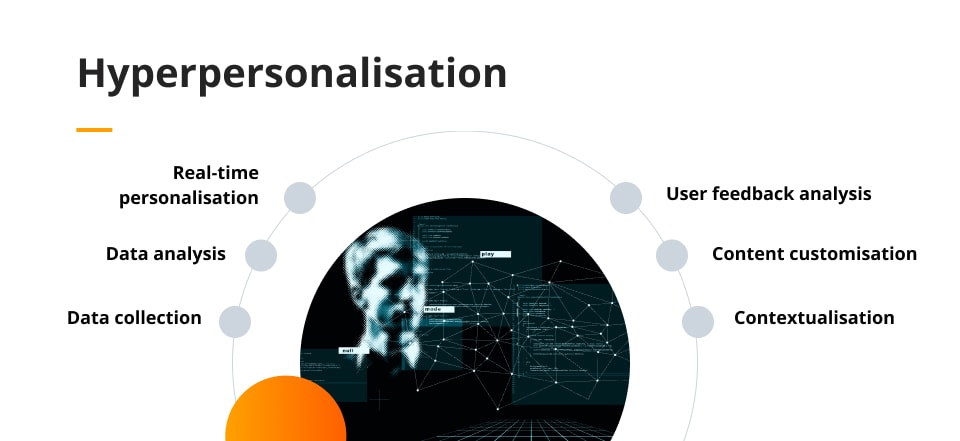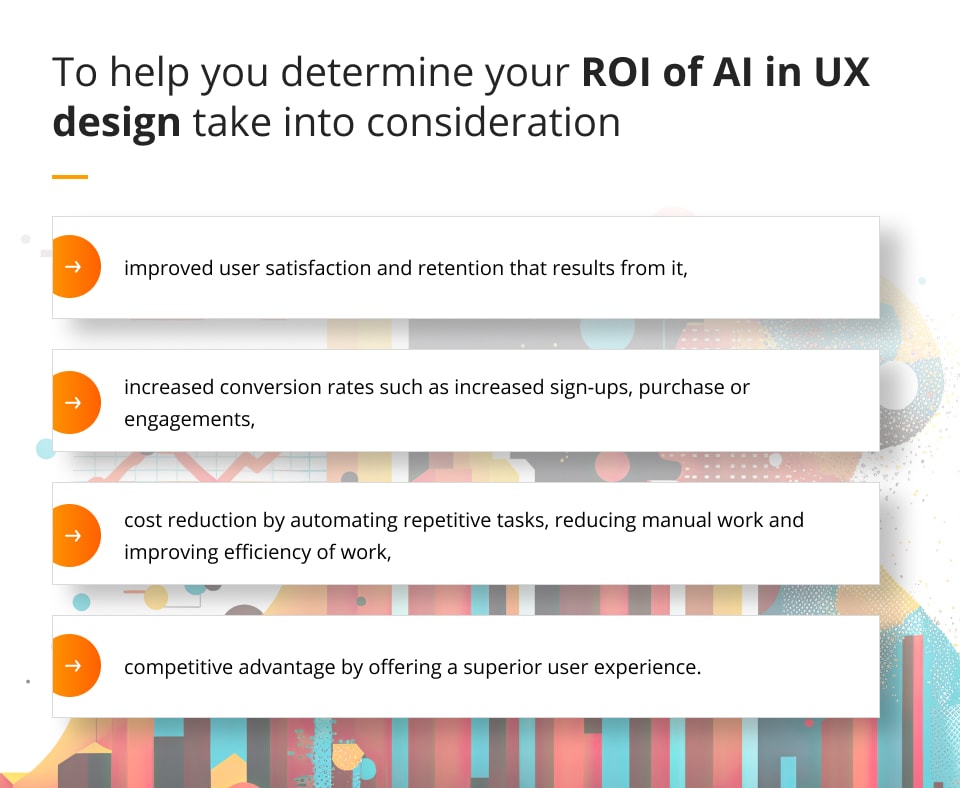
AI in UX Design: the pros, the cons and everything in between
AI keeps revolutionising many aspects of our world, and design is no exception. Is it really beneficial, can it be harmful and how to find your way about it – today we try to find answers to all those questions.
Introduction: the intersection of AI and UX design
Despite the ever-increasing use of artificial intelligence and the advancement of technology, there are still many doubts of how it can be used in different areas of life and work. In design, this intersection of AI and UX represents a dynamic and very evolving field.
Its main scope is that technology and human-centered design come together to create the best digital experience possible, while streamlining processes involved in developing it.
How AI algorithms transform User Experiences
The idea of using AI in UX design sounds intriguing, yet to many people it may seem vague. Let’s look at some main aspects of how AI algorithms transform user experiences.
The core principles of AI-enhanced UX
Before we dive into details, let’s look at some core principles of AI-enhanced UX. The first of them is the fact that it always puts the users and their needs, preferences and pain points at the centre of the design process.
The end product is developed so that it is helpful and responds to a certain problem. Because of that it is important to remember that AI should always enhance user experience, never overshadow it.
Another important principle of AI-enhanced UX is transparency of the workings of an AI model to understand how it reaches it decisions. Transparency is also linked to other ethical considerations that should be thought of when it comes to AI-enhanced UX, such as users privacy and ethical standards.
These are crucial aspects that allow customers to trust companies and products they develop.
Facilitating user journeys through machine learning
AI and ML-enhanced UX design facilitate user journeys while enhancing the user experience at various stages of interaction with a product or service.
It happens via personalised recommendations when customers are offered items relevant to individual preferences, via improved search functionality which provides more accurate and relevant results, and via user profiling based on demographics, behaviour and references.
All those aspects allow to create products that put their users first.
Hyperpersonalisation and AI in UX design
An interesting aspect of UX design in the context of artificial intelligence is hyperpersonalisation – advanced application of AI and data analytics to create highly tailored and individualised user experiences.
Such an approach goes much beyond traditional personalisation as it offers users content, recommendations and interactions that are very specific to their unique preferences and behaviours.
Hyperpersonalisation is achieved by data collection and analysis, real-time personalisation, content customisation, contextualisation and user feedback analysis. Using it in UX design helps delivering superior user experiences by creating an environment where users feel understood and valued.
Automated usability testing
An interesting angle of AI in UX design is automated usability testing – a method of evaluating the user-friendliness of a digital product or service through automated tools, scripts and algorithms, rather than relying solely on manual testing done by humans.
Automated usability testing will never replace tests by humans, but it provides them with significant support, allowing for a much more cost-effective and efficient way to identify usability issues, gather quantitative data and streamline the testing process.
Virtual assistants and chatbots
Chatbots and virtual assistants are already ruling the world. Just think about how many times you used them in the last few months. They are all powered by machine learning, can guide users through tasks and answer their queries.
They also offer immediate support and enhance the user journey by streamlining the resolution of issues. They are used in banks, medical centres and in shops, greatly reducing waiting time for customers and helping them 24/7.
Ethical considerations: balancing AI design tools capabilities with user privacy
All the benefits and use cases of AI in UX design sound amazing, but how about those ethical challenges we mentioned? How significant are they and what to do about them?
They are indeed crucially important. Apart from the already mentioned transparency in how AI tools collect, process and use data and informed consent for data collection and processing given by users, other vital aspects include data minimisation (meaning only data necessary for the AI tools’ purpose should be collected), data security and ownership, algorithmic bias mitigation and legal compliance.
Balancing AI capabilities with user privacy is an ongoing process that requires collaboration among UX designers, developers, data scientists and legal experts. The fundamental part here is to always remember that it is essential to prioritise user privacy and adhere to ethical principles throughout the AI development lifecycle, to create a responsible and trustworthy AI-powered environment.
The ROI of Artificial Intelligence in UX design: is the investment worth the outcome?
With so many different challenges around it you may be wondering whether the investment in AI in UX design is worth the outcome. It’s a tricky question, as answering it involves assessing both the initial costs of implementation of AI solutions and the potential benefits that accrue over time.
To determine the ROI of AI in UX design, conduct a cost-benefit analysis that weighs the investment against the expected outcomes and potential long-term gains. Consider the specific goals of your AI implementation, track relevant metrics, and compare performance before and after the implementation.
Keep in mind that AI is not a one-size-fits-all solution, and the ROI can vary depending on the specific use case and industry.
Conclusions and future trends: what to expect in the evolving landscape of AI in design
The landscape of AI in design is evolving all the time and we can be sure it will play a significant role in the years to come. It will keep enhancing user experience, it will augment designers’ capabilities by allowing them to streamline tasks and generate design recommendation and it will further develop their creativity.
A filed likely to grow significantly is the AI–generated content, including texts, visuals and audio, as well as emotional intelligence, allowing AI to advance in recognising and responding to user emotions and leading to emotionally engaged user experiences.
What’s more, AI can support developers in creating accessible UI/UX experiences that cater to a wide range of diverse users. Currently it is a difficult and expensive task, which can be supported by AI-enhanced applications.
But despite what many people fear, AI will never replace designers – it will rather enhance their work. Wisely used, it will save their time and allow them to create better, more user-friendly products quicker and at lower costs. It can also help designers to quickly deliver a future vision of a product or to create better prototypes or samples of the final UI solution.
One thing is sure – staying at the forefront of AI trends and adopting responsible deign practices will be crucial for success in the ever-evolving design landscape.







